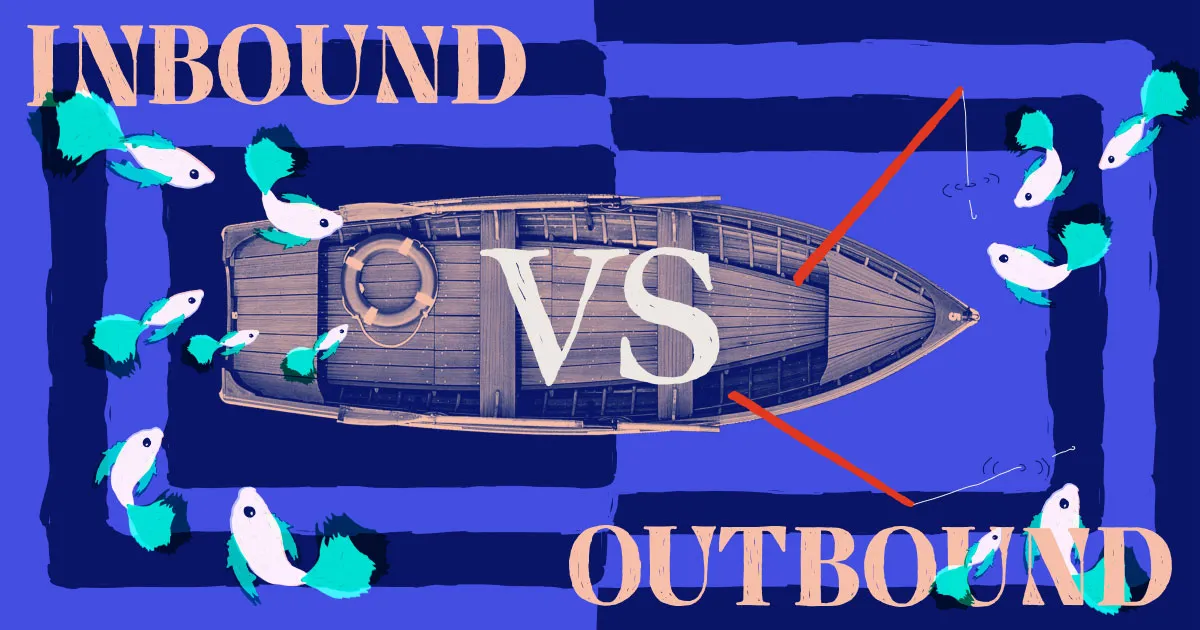We know that attracting the right partners to your program is the most effective way to grow your ecosystem. A good partner can generate value right away, and those ideal match joint ventures can become cornerstones of your program in the long run. Finding the right partners, however, requires a two-system approach to recruitment: inbound recruitment and outbound recruitment. We sat down with PartnerStack Product Marketing Manager Brad Tiller to discuss each strategy and how you can best implement them to grow your network.
What is inbound recruiting?
With inbound recruitment, the goal is to make your program as organically discoverable as possible to inbound candidates. Inbound recruiting can be through a marketplace, a widget, SEO, or even a landing page dedicated specifically to potential inbound candidates. It’s a more hands-off approach because you aren’t dedicating as much time to identifying potential partners and reaching out. Still, it also requires research to ensure what you’re offering in return is appealing and in line with any potential competitors.
Strategies for successful inbound partner recruitment
The first thing to ask yourself when inbound recruiting is what makes a good partner for your company. When starting out, it’s best to focus on a single type of partner (affiliate marketers, customer ambassadors, agencies and consultancies) and grow from there.
One of the first considerations for an inbound recruitment strategy is a landing page. “One of the most important things is having a page on your website dedicated to partners linked in the header or the footer,” Tiller says. The landing page on your website should clarify the reward model and explain the main incentive for ideal inbound candidates reaching out. “Make it easy for partners to identify what you’re looking for in a partner, what makes a good partner, and help them to understand if they’re a good fit or not,” they add. You want to ensure you’re setting up inbound candidates and partnerships for success by providing proper resources and lucrative incentives. How much can partners earn? What is your target audience? And how do partners get paid?
Once they’ve expressed interest and joined the program, follow that up with the same onboarding you’d provide to every other partner. “You have to make sure that once inbound candidates join the program, they get the right onboarding and dedicated resources to that,” notes Tiller.
Keep reading: Why partner education can make or break your program.
.webp)
Actions to consider for inbound partner recruitment:
- Have a straightforward application form with clear questions about what makes a partner a good fit
- Include a space that explains what you expect from potential partners
- Have a dedicated person or team to answer emails or Slack questions when inbound partners reach out
- List yourself in any relevant marketplaces ideal partners may visit
- Compile resources or education opportunities for effective onboarding
What is outbound recruiting?
Outbound recruitment is all about outreach to prospective partners and actively working to identify the types of outbound candidates you’d like to work with. Some examples include a Google search or reaching out on LinkedIn to find partners who would be a good fit. From there, partners can send an email or message to see if a company would like to join their partner program. You can also promote your program on social media, reach out to your current customer base, and join partner communities or other partner programs.
“It’s similar to outbound marketing or prospecting, where you’re going out into the world and contacting prospects, seeing if they’d be interested in your solution,” says Tiller. “You have complete control over the types of outbound candidates you recruit or invite and bring into your program.”
Strategies for successful outbound partner recruitment
While outbound recruiting can lead to partners who may better fit your program, it also requires more work. Identifying and reaching out to prospective partners can be time-consuming, so it’s essential to have a dedicated person or team reaching out and recruiting.
Before reaching out, know what you’re offering and make that as straightforward as possible. It’s also essential to explain how both companies will benefit by working together. “An example is a web design tool. When reaching out to designers, definitely mention what the tool is and why there’s significant overlap in the audience,” says Tiller. “The major thing is convincing the partner why their program would be a valuable way for them to spend their time.”
Other ways to discover potential partners through outbound recruitment include scouring competitors’ partner directories or using PartnerStack’s partner discovery tool, which has access to more than 65,000 SaaS partners.
Actions to consider for outbound partner recruitment:
- Clarify what you’re offering as a partner and what prospective partners will receive by working with you
- Highlight what makes a partnership with you and your product unique
- Identify audience overlaps to ensure the prospective partners are the right fit
- Have a dedicated person or team to identify and reach out to prospective partners
Related: Expert tips and tricks to revive inactive partnerships.
.webp)
Balancing and managing outbound and inbound recruiting
Which approach is right for your ecosystem? Spoiler alert: it’s both. “You should be doing both of these; it’s not like one channel is better or more important than the other,” explains Tiller. “Typically, programs with a robust inbound and outbound recruitment strategy are the most successful.”
Even starting out, it’s essential to set yourself up for success with strategies in place for both inbound and outbound partnership recruitment. Tiller recommends starting by establishing a solid inbound recruitment strategy, including getting listed in the PartnerStack Marketplace where some programs have earned more than 30 per cent of their entire program revenue from partners.
Then, start your outbound partner recruitment right away in order to to track down your ideal partners. “Even if you just do, say, 10 or 20 outreaches and you get a few out of that, they can often be some of the most valuable partners to get started with,” Tiller says. “You really want to do both at the start. It’s not an either-or thing. Both channels are critical, and there will be some level of resource and effort investment in both.”
Tiller recommends giving yourself at least a six month timeline to allow partnerships to develop and your ecosystem to grow. PartnerStack can help manage some of the workflow through tools like automated onboarding emails and resources to ensure everything is set up to handle a possible influx of applications for your program.
Once you start establishing partnerships, it’s equally important to manage those relationships and constantly make the case that your program is something partners should be spending time on. That begins at the onboarding stage, with adequate resources that help partners understand your audience and how to promote your product.
“You still definitely need at least one full-time person dedicated to partnerships to ensure that partners are getting everything they need,” Tiller adds. “And you may need to scale up the team as the number of partners increases.” That’s the goal here: program growth.

















